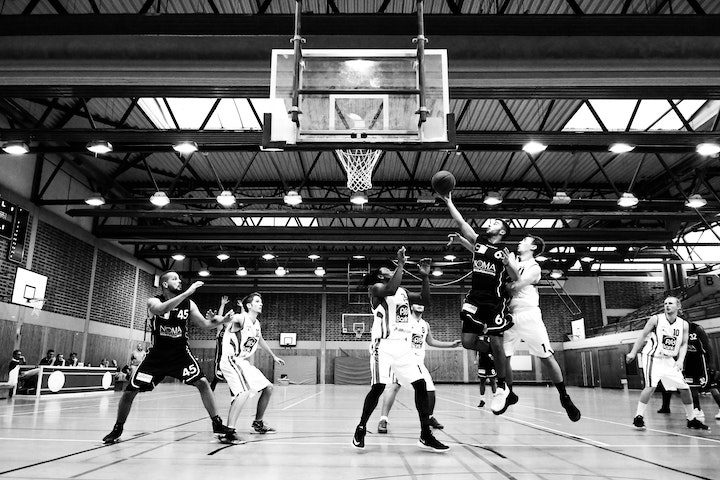What’s Touring in Basketball? (Rationalization & Examples)

[ad_1]

Touring in basketball is a violation that often confuses folks.
This isn’t all that stunning contemplating the rule is barely completely different on the prime degree of basketball.
Unsurprisingly, this results in frequent debates about whether or not a selected transfer is or just isn’t a journey.
For instance, the “euro step” and the “step by means of” steadily result in on-line disagreements.
Now it’s time to finish the confusion…
Beneath, I’ll break down precisely what touring is in basketball.
What’s Touring in Basketball?
This is a easy definition:
Touring is a violation that includes illegally shifting one or each toes whereas in possession.
In basketball, gamers can’t take greater than two steps with the basketball of their arms.
(Except they’re dribbling, after all)
If a participant ever takes greater than two steps whereas they’ve the ball, they’ll be known as for touring.
This is an excellent video that goes extra in-depth on the FIBA guidelines for touring:
The Pivot Foot
Gamers set up a “pivot foot” once they aren’t dribbling the basketball. That is the foot that IS NOT allowed to maneuver when the participant is stationary and in possession of the ball.
Gamers can spin on their pivot foot, however it should stay in the identical location and can’t be slid.
Gamers ARE ALLOWED to carry the pivot foot off the bottom, however the ball should go away their arms BEFORE their pivot foot returns to the ground. That means they have to both shoot or go.
Why is Touring Unlawful?
To place it merely…
The touring rule is in place to present the defensive workforce a combating probability.
Give it some thought like this:
If the offensive workforce might dash with out dribbling, take limitless steps, and alter their pivot foot at any time when they need, the defensive workforce would have NO CHANCE of stopping the ball.
So, sure guidelines have been carried out to reduce the offense’s benefit.
Such because the double dribble violation, back-court violation, and touring violation.

What’s the Penalty for Touring?
Just like a double dribble, touring ends in a dead-ball turnover by the offense.
On the faculty degree and under, the protection will obtain the ball and throw it in from the sideline or baseline, near the place the touring violation occurred.
Within the NBA, the ball is required to be inbounded between the free throw line and the baseline.
Different Examples of a Touring Violation:
The 2 commonest methods to be known as for touring in basketball are for taking greater than two steps or for incorrect use of the pivot foot.
Nonetheless, there are different methods to be known as for touring.
These embody:
1. Rolling on the Ground
If a participant is in possession of the basketball on the ground and so they roll over with it, this shall be deemed a touring violation.
2. Leaping Whereas in Possession
Generally known as ‘up and down.’ If a participant leaves their toes with the basketball (jumps within the air), they have to go or shoot it earlier than both foot touches the bottom once more.
3. Passing to Oneself
If a participant has possession and makes a go to themselves (by chance or deliberately) with out every other participant touching the ball, that is deemed a touring violation.
4. Falling Down
When a participant in possession of the basketball falls to the ground and not using a foul being dedicated, they are going to be known as for a touring violation as their pivot foot would have left the ground.
5. Sliding the Pivot Foot
Even when the pivot foot doesn’t “technically” come off of the bottom, it should keep in the identical spot on the ground. Sliding or dragging the pivot foot is prohibited and shall be deemed a journey.
6. Stepping Earlier than Dribbling
This is among the commonest touring violations that you simply‘ll see known as. When a participant takes their first step, the basketball should contact the ground earlier than their pivot foot returns to the ground.
7. Making an attempt to Get Up With out Dribbling
If a participant has possession of the ball whereas on the ground, they can not get again up with the ball except they’re dribbling. If a participant stands up with the ball and so they’re not, it will likely be known as a journey.
8. Shuffling of the Toes
When a participant catches the ball (particularly younger gamers), they may typically by chance “shuffle” their toes. This includes shifting the pivot foot, so it will likely be deemed a touring violation.
Are Touring Guidelines Really Enforced?
As basketball is such a fast-paced recreation, catching each single touring violation is tough.
Particularly for referees with just a few seasons of expertise.
Critics of the NBA typically declare that touring just isn’t known as as typically accurately. However many of those critics aren’t conscious that the NBA’s definition of touring is barely completely different than different ranges. The NBA’s touring definition is eight elements and incorporates the “collect step.”
That stated… referees are human and infrequently overlook the plain ones:
Humor apart, if a touring violation is missed, it’s sometimes as a result of the tempo of the sport is so quick that the referee didn’t see it or wasn’t assured sufficient to make the decision.
So don’t be shocked to see a couple of calls missed every recreation, because it’s such a split-second choice.
As for travels on the youth basketball degree…
Referees might not be as strict on every touring violation.
At that age, if each touring violation was known as, there can be a whistle each 5 – 7 seconds… and that’d be no enjoyable in any respect.
That stated, referees shouldn’t let younger youngsters get away with all the things, both…
There must be a steadiness on how a lot touring is named vs let go.
As gamers grow old, referees can and may get extra strict.
Educating Gamers to Keep away from Touring
For teenagers, determining the proper footwork to keep away from touring could be a lengthy course of.
At a basketball recreation with inexperienced persons, right here are some things you may see:
- A participant begins operating with out dribbling the ball
- A participant by chance switching their pivot foot whereas in possession
- A participant shuffling their toes to create house to allow them to go to a teammate
“How are you going to workforce gamers to keep away from these errors?”
At practices and earlier than video games, clarify what a journey is and the right way to use a pivot foot.
When gamers do commit touring violations (in practices or video games), cease them and clarify what they incorrect, and the way they will be sure that to keep away from that mistake sooner or later.
Not solely does this assist the participant who dedicated the violation, however it additionally helps the opposite gamers who’re listening as they get extra reinforcement on frequent errors and what the foundations are.
Will there be plenty of stoppages firstly?
Completely — however it’s the one means for gamers to study and enhance.
There are additionally easy drills you should utilize at observe that work on dribbling, leap stops, and utilizing a pivot foot. These are all elementary expertise which are crucial for gamers to keep away from touring.
Conclusion
“Touring” in basketball is a violation that’s known as when a participant makes use of incorrect footwork.
Whether or not that’s taking an additional step to achieve a bonus, or just an unintentional shuffle of the toes whereas looking for an open teammate to go to.
It’s a violation that can occur at the very least a few occasions in most video games, and a coach shouldn’t gloss over it if the identical sort of violation happens steadily.
Avoiding touring is a means for groups to maintain possession and get extra alternatives to attain.
With correct steerage in observe, gamers will repair their footwork and keep away from touring.
Additional Studying: Basketball Guidelines and Rules (Up to date Model)
[ad_2]
Source_link




